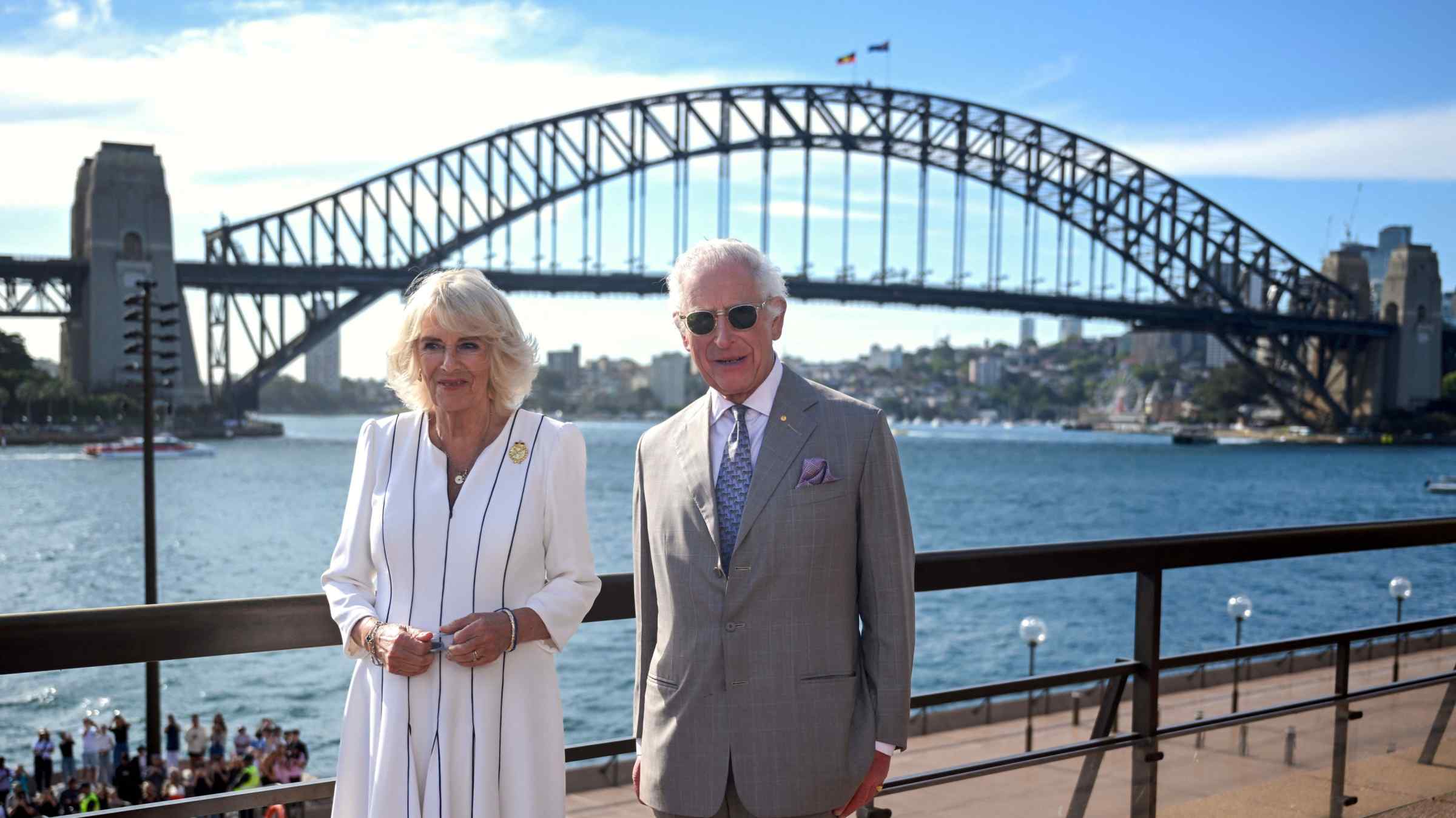King Charles and Camilla have touched down in Australia, but the royal couple’s arrival has sparked more controversy than celebration.
From the moment they landed, it was clear that the warm welcome they may have anticipated was far from reality.
Even before setting foot on Australian soil, various politicians had opted out of attending the ceremony meant to greet them, signaling a lack of enthusiasm for their visit.
As they began their tour, protests erupted almost immediately.
Reports indicated that during a church service in Sydney, demonstrators were out in full force, voicing their discontent.
Videos surfaced showing crowds chanting slogans like “Go home, King!”
It seems that many Australians are not particularly fond of the monarchy, with a significant portion expressing their desire for change.
The situation raises an interesting question: Is it normal for Australia, a nation with its own identity, to have a monarch residing thousands of miles away?
This disconnect seems to fuel the sentiments of those opposing the royal visit.
Critics argue that the British monarchy has a history of causing pain and suffering in former colonies, making their presence in Australia feel like an unwelcome reminder of that past.
Interestingly, this reception starkly contrasts with the visit of Harry and Meghan, who were met with enthusiasm and admiration during their time in Australia.
The public perceived them as approachable and committed to positive causes, which undoubtedly contributed to their warm reception.
Fast forward to King Charles and Camilla’s visit, and the narrative has shifted dramatically.
A local resident expressed frustration over the portrayal of the royal visit in the media, claiming it was nothing more than a “grotesque manipulation” of public sentiment.
While British outlets reported thousands braving the heat to catch a glimpse of the royals, locals revealed that the roads were closed not for the royal couple, but for the Crow’s Nest Festival—a popular event drawing large crowds annually.
This coincidence created an illusion of royal popularity that the media eagerly amplified.
Despite claims of enthusiastic crowds, many Australians were simply rerouted due to the festival’s road closures.
Witnesses described a scene where most attendees were there out of curiosity rather than adoration for the royals.
One individual even dismissed reports of a gathering outside the church as a “big fat lie,” asserting that people had stumbled upon the royals while going about their daily activities.
The level of disinterest among the Australian populace is striking.
Reports suggest that around 40% of Australians are unaware that King Charles serves as their head of state.
This lack of recognition underscores a broader apathy toward the monarchy, further complicating the royal couple’s visit.
In a rather desperate attempt to drum up support, royal correspondents have been seen imploring locals to wave at the royals for the cameras.
Such tactics have drawn comparisons to North Korean propaganda, highlighting the lengths to which the monarchy and its supporters will go to create a façade of public affection.
This approach not only insults the intelligence of the public but also undermines the values of transparency and honesty.
Footage from the event also raised eyebrows, with observers noting that Camilla appeared unsteady as she navigated through the so-called crowd.
Speculation about her well-being circulated, casting a shadow over the already shaky image of the royal couple.
The portrayal of this visit as a triumphant moment for the monarchy feels increasingly disingenuous.
Adding to the controversy, reports emerged about King Charles’ time at a luncheon held in his honor, where he reportedly spent less than ten minutes.
This brief appearance further fueled perceptions of disrespect toward the Australian people, who expected a more engaged and appreciative visit.
The strategic timing of the church visit amidst a bustling festival seems to have been an attempt to mask the reality of their unpopularity.
The juxtaposition of the royal couple’s visit with a major community event only served to highlight the disconnect between the monarchy and the Australian public.
As the dust settles on this royal visit, it’s clear that the monarchy faces significant challenges in maintaining relevance and respect in Australia.
With growing discontent and calls for accountability, the facade of royal popularity is crumbling, revealing a deeper truth about the relationship between the monarchy and the Australian people.
The narrative surrounding this visit is not just about a royal tour; it’s a reflection of changing attitudes toward monarchy and colonial legacies in modern Australia.
Related Stories

